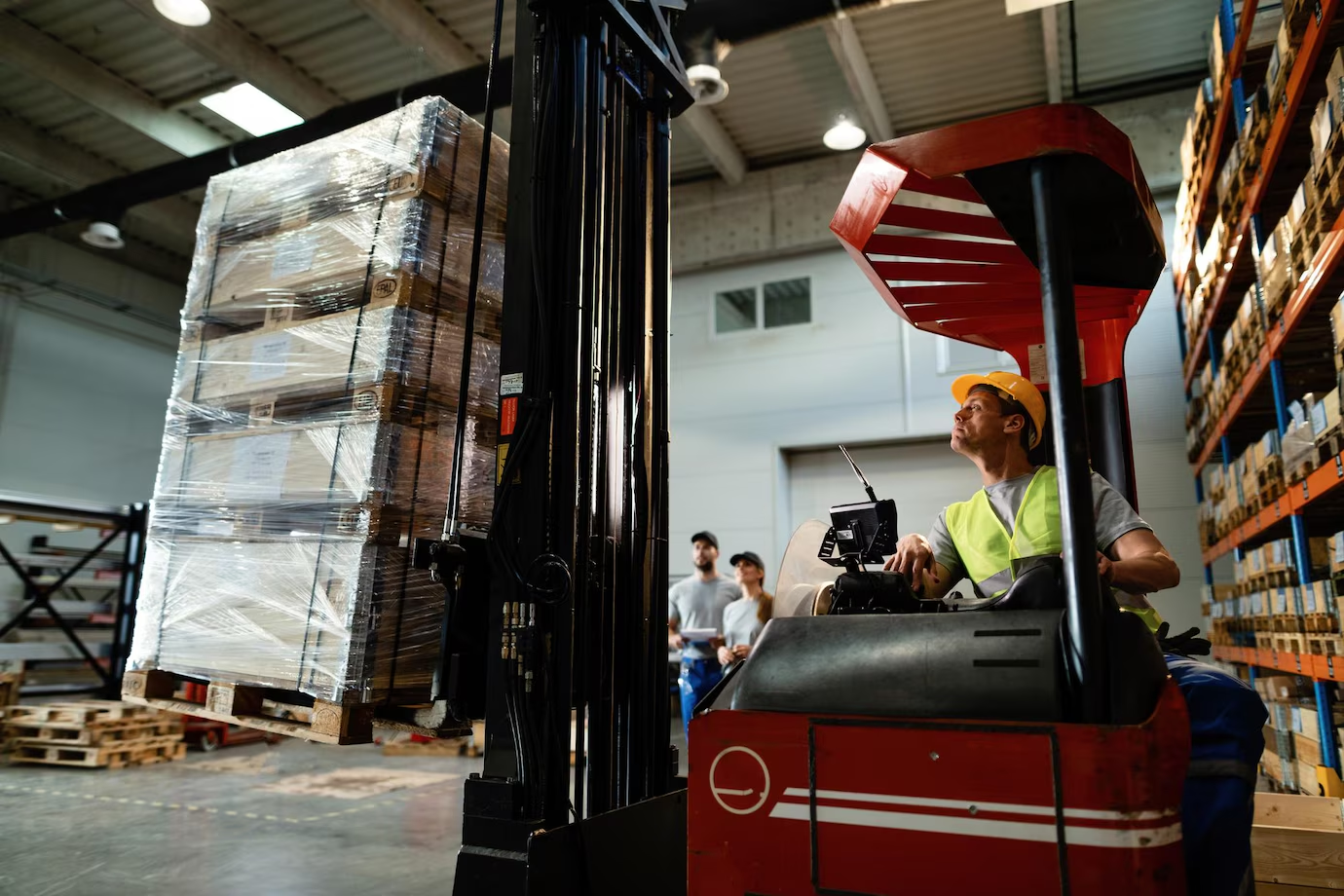Handling heavy materials is a crucial part of many industries, from construction and manufacturing to logistics and healthcare. Whether it’s lifting large equipment, moving pallets of goods, or transporting bulky items, improper handling can lead to workplace injuries, inefficiencies, and costly damages.
Every industry has unique challenges when it comes to moving heavy materials, but the fundamental principles of safety and efficiency remain the same. Understanding best practices, using the right equipment, and prioritizing worker safety can prevent accidents and streamline operations. This article outlines industry-specific strategies and key considerations for effectively handling heavy materials.
1. General Best Practices for Heavy Material Handling
Regardless of industry, certain guidelines apply to all types of heavy lifting. These universal practices can prevent injuries and improve workplace efficiency:
- Use Proper Lifting Techniques: Always lift with your legs, not your back. Keep the load close to your body and avoid twisting while lifting.
- Leverage Teamwork: If an object is too heavy for one person, seek assistance from a coworker or use mechanical aids.
- Follow Safety Guidelines: Regular safety training ensures workers are up to date on best practices and helps reduce workplace accidents.
- Invest in the Right Equipment: Whether it’s forklifts, hoists, or conveyor belts, using the right tools minimizes physical strain and improves efficiency.
- Organize Workspaces Efficiently: Cluttered workspaces increase the risk of trips and falls. Keeping pathways clear and storage areas well-organized helps streamline operations.
2. Industry-Specific Strategies for Heavy Material Handling
Manufacturing & Warehousing
Factories and warehouses handle large volumes of materials daily. Without proper strategies, inefficiencies can slow down production and increase injury risks.
- Use Pallet Jacks and Forklifts: These machines significantly reduce the need for manual lifting and prevent workplace fatigue.
- Implement Conveyor Systems: Automated conveyors minimize physical handling and speed up processes.
- Optimize Storage Layouts: Organizing inventory strategically reduces the distance materials need to be moved, saving time and effort.
Construction Industry
The construction industry involves lifting and moving materials in unpredictable environments. Safety is paramount, given the risks associated with uneven terrain and heavy loads.
- Use Heavy-Duty Cranes and Hoists: These machines handle oversized loads more effectively than manual labor.
- Wear Proper PPE: Gloves, steel-toed boots, and back supports can reduce strain and injury risks.
- Be Mindful of Weather Conditions: Rain and wind can make handling heavy materials even more dangerous, requiring extra precautions.
Logistics & Transportation
Moving heavy materials in the logistics industry requires careful handling to prevent cargo damage and ensure timely deliveries.
- Load and Unload with Proper Equipment: Hydraulic lifts and self-dumping hoppers help prevent injuries and streamline material transport.
- Secure Cargo Properly: Unstable loads can shift during transit, causing damage or accidents. Use straps, braces, and pallets to secure materials.
- Follow Weight Limits: Exceeding truck or vehicle weight limits can lead to dangerous driving conditions and regulatory fines.
Healthcare & Laboratory Settings
Though not always the first industry that comes to mind, healthcare professionals frequently handle heavy medical equipment, machinery, and even patients.
- Use Assistive Devices: Patient hoists and motorized hospital beds prevent caregiver injuries.
- Practice Safe Lifting Techniques: Healthcare workers should avoid bending at the waist and use their legs when lifting patients or equipment.
- Reduce Manual Handling Where Possible: Implementing rolling carts and wheeled storage solutions minimizes the need for heavy lifting.
Mining & Heavy Machinery Operations
Mining and industrial settings involve extreme conditions and require specialized handling techniques.
- Use Automated Systems Where Possible: Remote-controlled or robotic equipment reduces manual lifting risks in hazardous environments.
- Implement Rigorous Safety Checks: Equipment should be regularly inspected to prevent malfunctions that could lead to accidents.
- Ensure Workers Are Properly Trained: Given the high-risk nature of these industries, workers must be trained extensively on heavy material handling procedures.
3. Advanced Technologies for Heavy Material Handling
Technology is revolutionizing how industries handle heavy materials, reducing human strain and improving efficiency. For comprehensive guidance on safe lifting practices and manual material handling, refer to the NIOSH Work Practices Guide for Manual Lifting.
- AI and Automation: Machine-learning algorithms optimize warehouse logistics, ensuring materials are moved efficiently.
- Smart Wearables: Devices that monitor posture and lifting techniques can alert workers when they are lifting incorrectly.
- Exoskeletons: These wearable robotic suits reduce physical strain by assisting workers with lifting and carrying heavy objects.
4. Common Mistakes to Avoid
Even with the best equipment and training, common mistakes can lead to inefficiencies and injuries.
- Ignoring Weight Limits: Overloading forklifts, trucks, or lifting devices increases the risk of accidents and equipment failure.
- Neglecting Routine Equipment Maintenance: Machines used for heavy lifting should be regularly inspected to prevent malfunctions.
- Skipping Proper Training: Untrained workers are more likely to make dangerous mistakes, leading to workplace injuries.
5. Final Tips for Efficiency and Safety
To create a safer and more efficient workplace, businesses should adopt a proactive approach to heavy material handling.
- Conduct Regular Safety Audits: Regular inspections help identify hazards before they lead to accidents.
- Foster a Culture of Safety: Encouraging open communication about safety concerns can help prevent injuries.
- Invest in Equipment that Reduces Strain: The right tools, such as self-dumping hoppers and hoists, can significantly reduce manual labor requirements.
Conclusion
Handling heavy materials is a fundamental aspect of many industries. Whether it’s in warehouses, construction sites, healthcare facilities, or transportation hubs, proper techniques and the right equipment can make all the difference. By implementing best practices, avoiding common mistakes, and leveraging advanced technology, businesses can improve efficiency while keeping workers safe. Prioritizing smart material handling solutions benefits not just employees, but the overall success and productivity of the operation.




